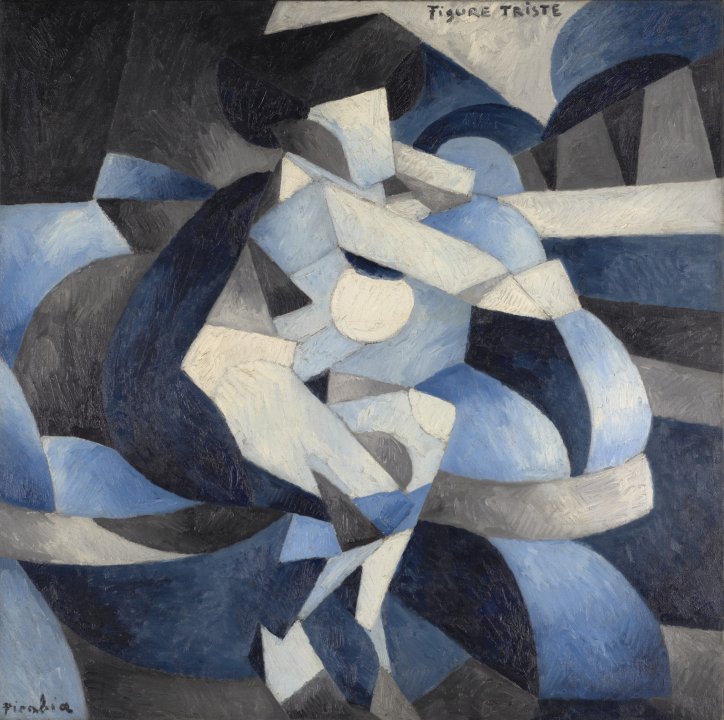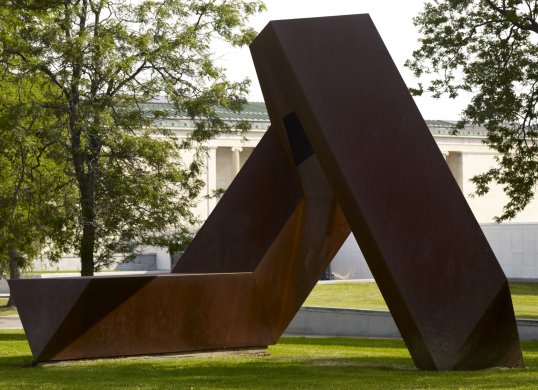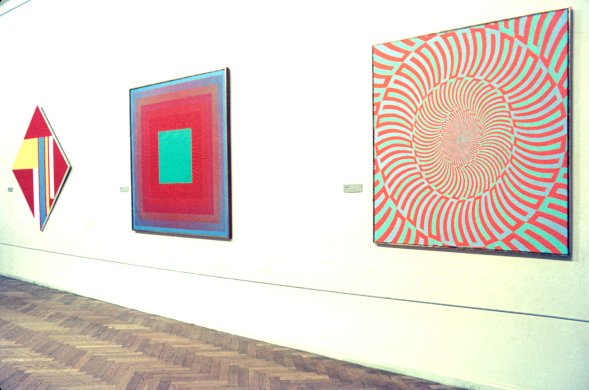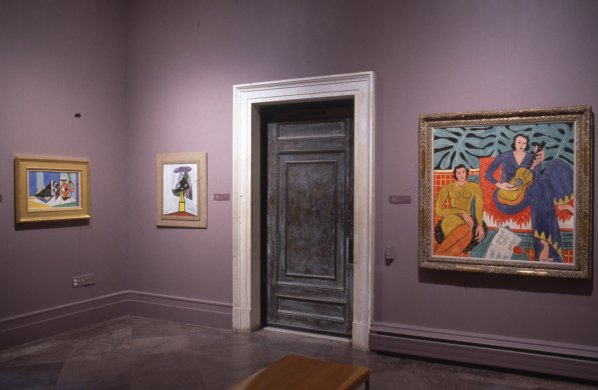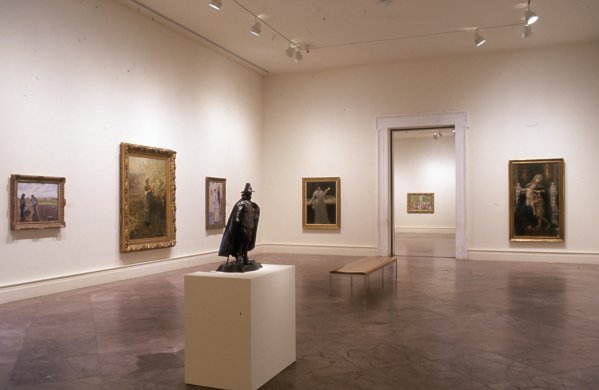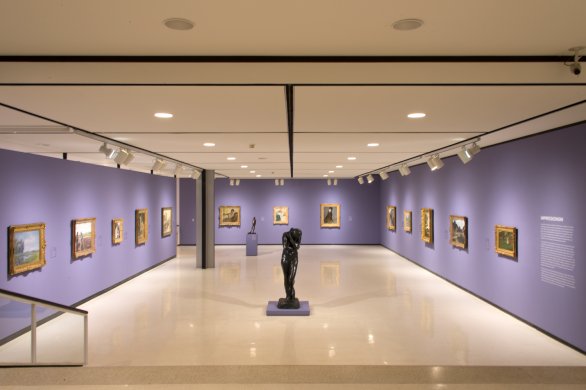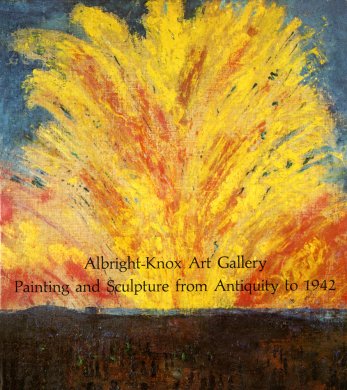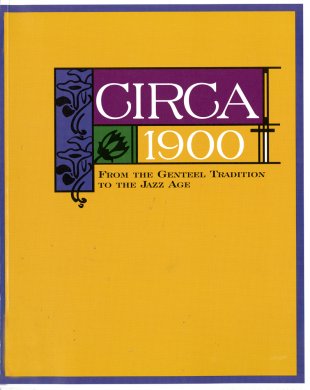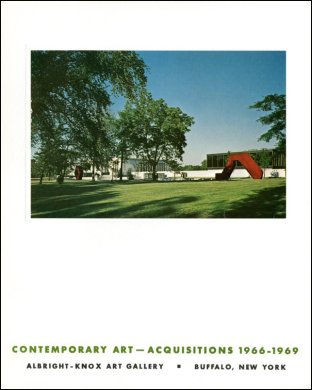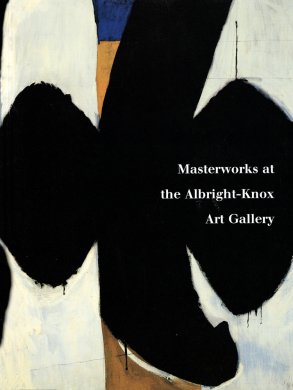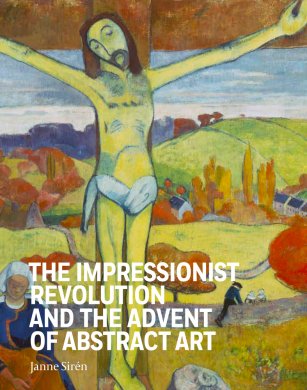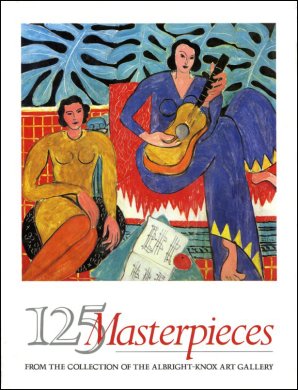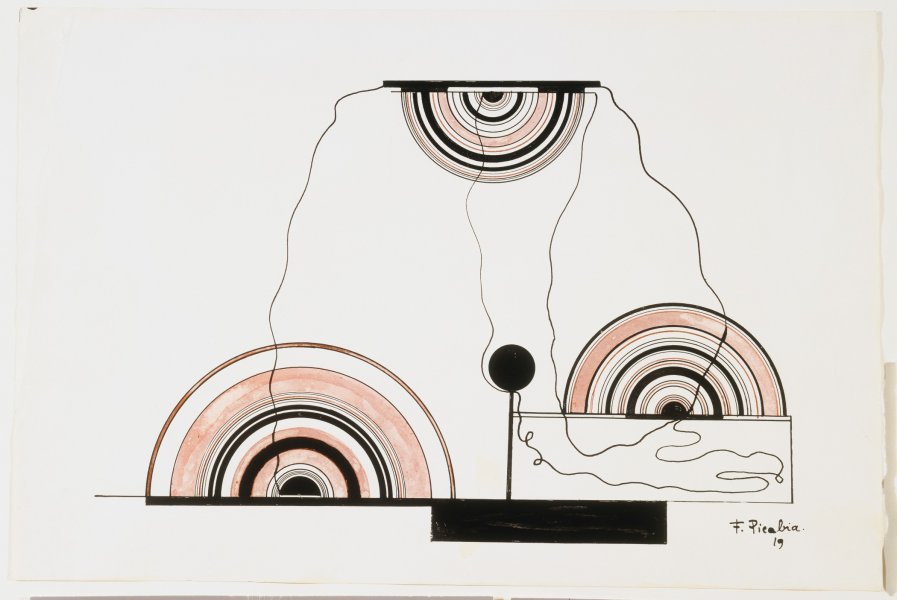Francis Picabia
French, 1879-1953
Figure triste (Sad Figure), 1912
Artwork Details
Collection Highlight
Materials
oil on canvas
Measurements
support: 47 1/2 x 47 1/2 inches (120.65 x 120.65 cm); framed: 48 5/16 x 48 3/8 x 2 1/2 inches (122.72 x 122.87 x 6.35 cm)
Collection Buffalo AKG Art Museum
Credit
Gift of The Seymour H. Knox Foundation, Inc., 1968
Accession ID
1968:6
In early 1911, Francis Picabia was creating colorful and expressive paintings in a Fauvist manner, but by the end of the year, he had developed a fragmented, planar approach in response to Cubism. Here, Picabia chose a somber palette: black, grey, and white paired with a cold blue, a hue that is traditionally associated with feelings of unhappiness. Within the abstracted composition, we can perceive a small seated figure in profile with its knees slightly drawn up, right arm extended, and its head leaning to the side supported by a bent left arm. Such body language conveys despondency and is reminiscent of earlier representations of Melancholy in art. This small figure appears, in turn, to be surrounded by the embrace of another, larger figure. Picabia, whose own mother died when he was just seven years old, may be depicting a scene of maternal comfort or grief.
